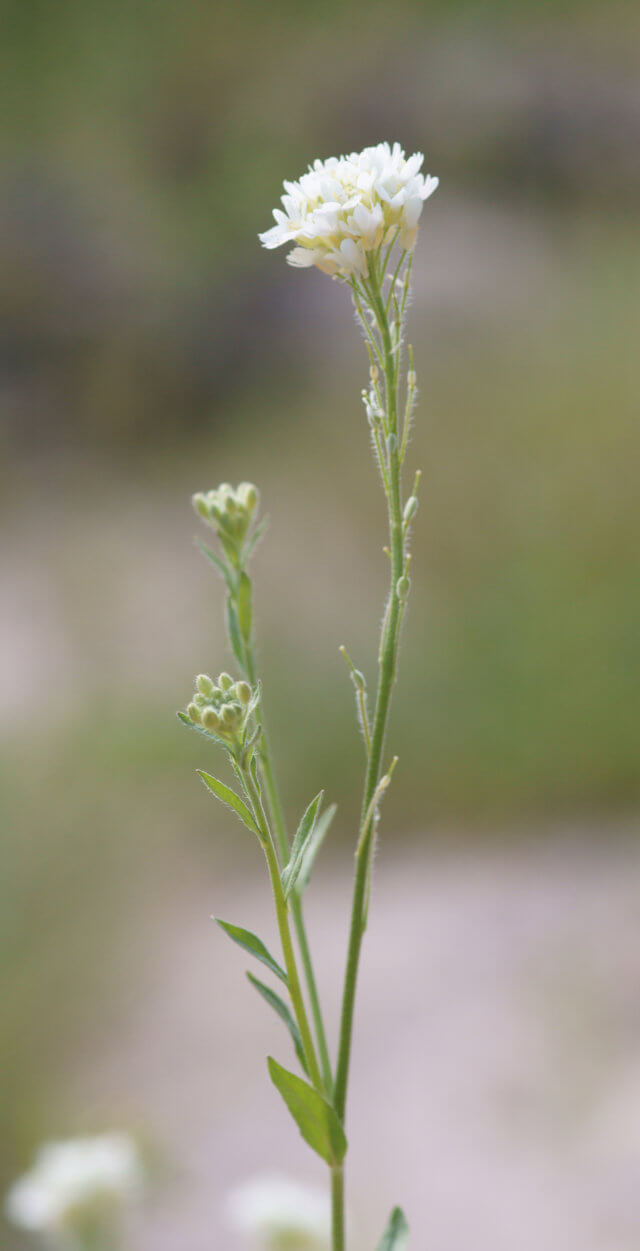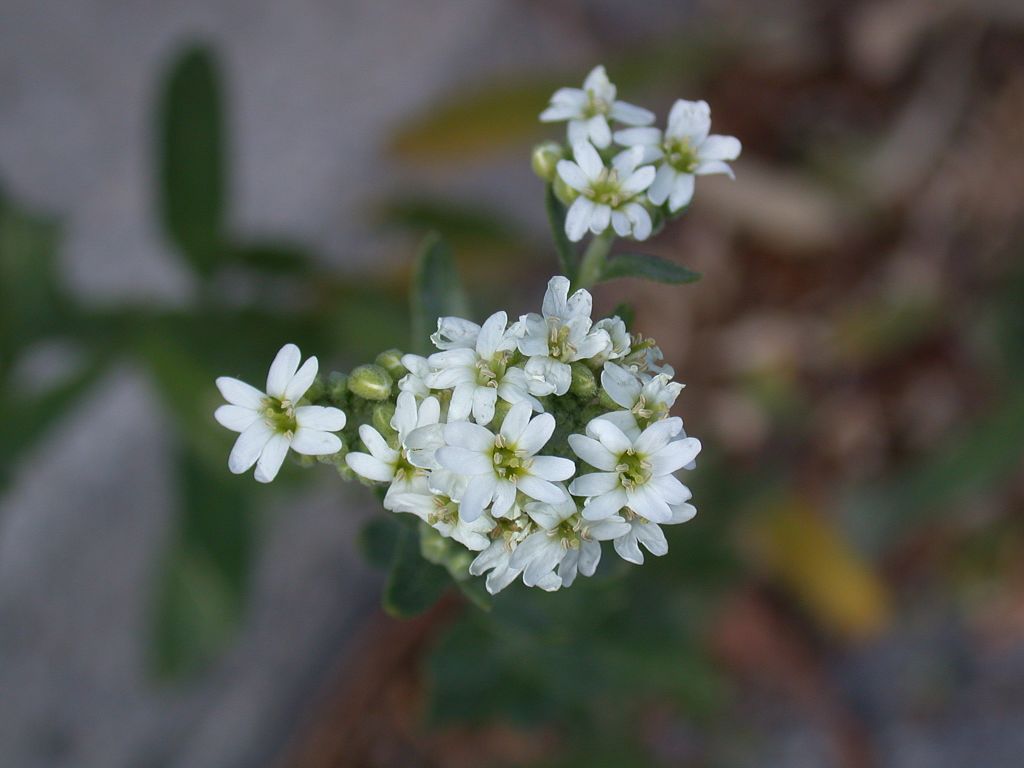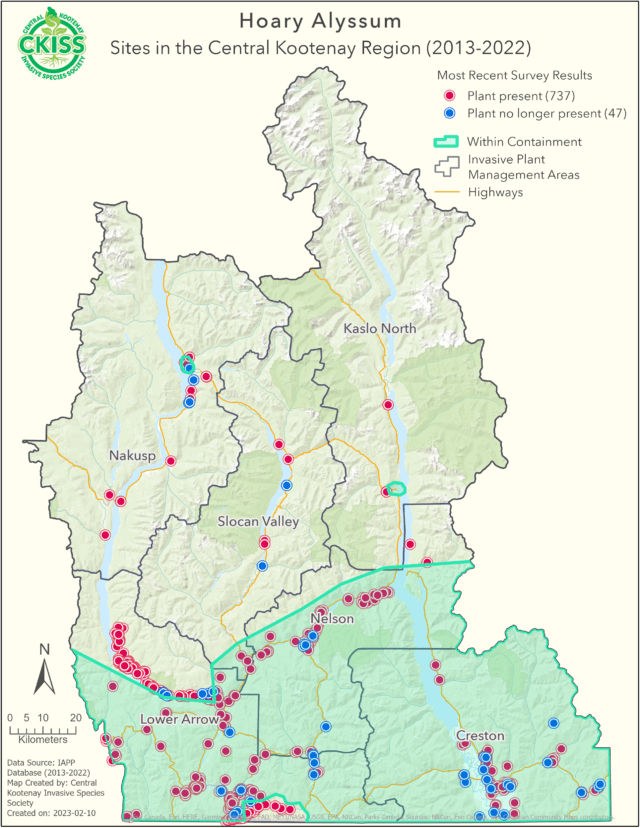Berteroa incana
Description

- Native to east-central Europe and western Asia.
- Annual or short-lived perennial.
- In the Mustard family.
- Has white flowers with notched petals.
- Multiple stalks arise from the base of the plant.
- Stems and leaves feel rough, similar to a sandpaper texture
- Grows well on sandy and/or gravelly soils and dry disturbed open sites.
- Found throughout the CKISS region.
Introduction and spread
- Reproduces by seed.
- Each plant produces many seeds!
- Seeds can spread on vehicles, boots, clothing, equipment, or by animals, wind and water.
Status in the CKISS region
- Hoary alyssum is classified as Contain on the CKISS Annual Priority List.
- It is considered to be widespread in the Creston Invasive Plant Management Area (IPMA).
- It is less prevalent in the Slocan IPMA, where it is classified as Eradicate and eradication is feasible.
- In the rest of the CKISS region, efforts are made to Contain hoary alyssum and limit further spread.
- If you notice this plant growing outside of its containment area, please report it!
- To learn more about how CKISS classifies and manages invasive species, see our Invasive Species Priority Lists page.
Consequences of invasion
- Invades rangelands and pastures, impacting livestock.
- Infestations can reduce hay quality and value.
Integrated pest management options
- Prevent establishment through appropriate range management practices, limiting soil disturbance, and encouraging healthy native plant populations.
- Small populations can be addressed by pulling the plants before seeds have set.
- Mowing can help to reduce seed production, but will not eliminate the population.
- Become PlantWise and avoid growing hoary alyssum in your garden.


